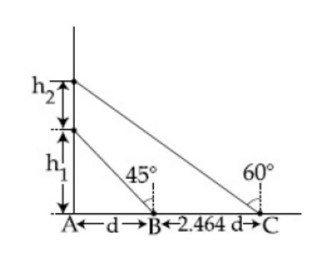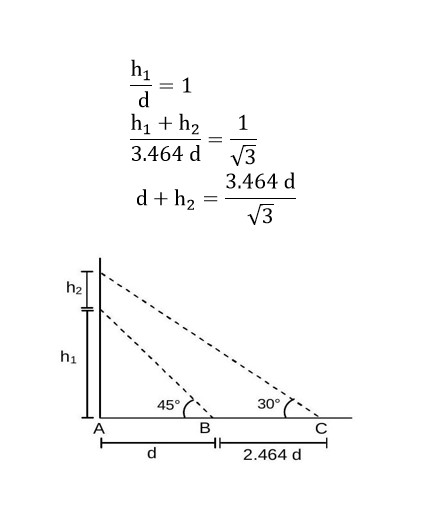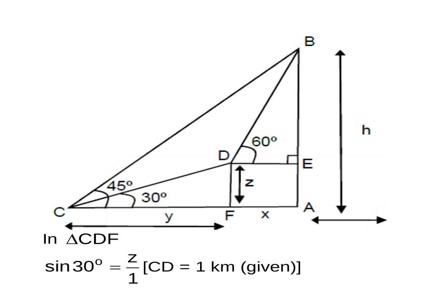Class 11th
Get insights from 8k questions on Class 11th, answered by students, alumni, and experts. You may also ask and answer any question you like about Class 11th
Follow Ask QuestionQuestions
Discussions
Active Users
Followers
New answer posted
2 months agoContributor-Level 10
As Torque net = 0
Hence, L = constant
Iω = (3I + I)ω'
ω' = ω/4
Loss in K.E. = 1/2 Iω² - 1/2 (I + 3I)ω²/16 = 1/2 Iω² (1 - 1/4)
Fractional loss = (3/4 * 1/2 Iω²)/ (1/2 Iω²) = 3/4
New question posted
2 months agoNew question posted
2 months agoNew answer posted
2 months agoContributor-Level 10
As it just floats B = mg
(4πR³/3) (ρ? ) (g) = (4πR³/3 - 4πr³/3) (ρ? ) (g)
R³ = (R³ - r³) (27/8)
On solving we get,
r = 8/9 R (approx)
New answer posted
2 months agoContributor-Level 9
Equation of line is x/3 + y/1 = 1
⇒ x + 3y - 3 = 0
The image (x? , y? ) of point (-1, -4) is given by:
(x? - (-1)/1 = (y? - (-4)/3 = -2 (1 (-1) + 3 (-4) - 3) / (1² + 3²)
(x? + 1)/1 = (y? + 4)/3 = -2 (-1 - 12 - 3)/10 = -2 (-16)/10 = 16/5
x? + 1 = 16/5 ⇒ x? = 11/5
(y? + 4)/3 = 16/5 ⇒ y? + 4 = 48/5 ⇒ y? = 28/5
New answer posted
2 months agoContributor-Level 9
Applying Rolle's theorem in for function f (x), there exists c such that f' (c) = 0, c ∈ (0,1).
Again applying Rolle's theorem in [0, c] for function f' (x), there exists c? such that f' (c? ) = 0, c? ∈ (0, c).
Option A is correct.
New answer posted
2 months agoContributor-Level 9
Given equation is 2x (2x + 1) = 1 ⇒ 4x² + 2x - 1 = 0. Roots of the equation are α and β.
∴ α + β = -2/4 = -1/2 ⇒ β = -1/2 - α
and
4α² + 2α - 1 = 0 ⇒ α² = (1-2α)/4 = 1/4 - α/2
Now
α = 1/2 - 2α²
Substituting into the expression for β:
β = -1/2 - (1/2 - 2α²) = -1 + 2α²
New answer posted
2 months agoContributor-Level 10
(x/m) = k (P)¹/?
log (x/m) = log k + (1/n) log P
Slope = 1/n = 2 So n = ½
Intercept ⇒ log k = 0.477 So k = Antilog (0.477) = 3
So (x/m) = k (P)¹/? = 3 [0.04]² = 48 * 10?
Taking an Exam? Selecting a College?
Get authentic answers from experts, students and alumni that you won't find anywhere else
Sign Up on ShikshaOn Shiksha, get access to
- 65k Colleges
- 1.2k Exams
- 679k Reviews
- 1800k Answers




